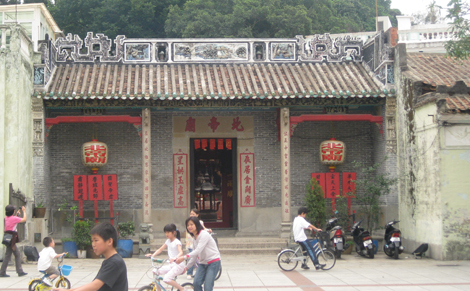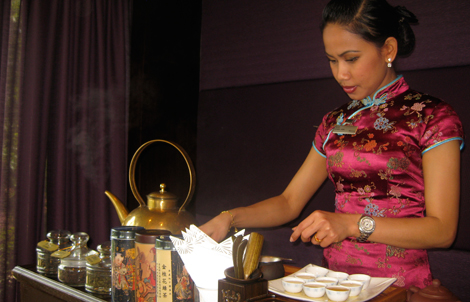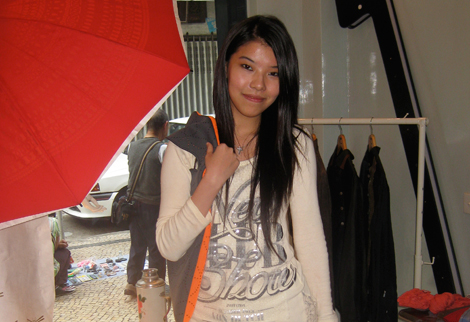Reinvented as the “Asian Vegas,” Macau comes into its own, but with its old world heart and soul intact.

After being spoiled in Cathay Pacific’s Business Class with Agnes B. amenity kits and restaurant grade food and a short wait in its fully-appointed Hong Kong airport lounge (complete with noodle soups and dim sum made fresh to order), I arrived in Macau two years later (via a Turbo Jet ferry service) with a sudden visual shock of a city that doubled in size and was twice as luminous. This time around, Teresa Gomes—by coincidence a friend and co-worker of one of my mother’s best friends—was our guide. Her approach to showing off Macau was sweetly personal, deftly blending usual must-sees with her personal favorite restaurants, side streets, temples, food markets and shops.

Thanks to American visionaries Steve Wynn and Sheldon Adelson, and local counterparts Stanley and Pansy Ho (the local father/daughter powerhouse), it was evident Macau was meeting expectations as the Vegas of Asia, with a sumptuous buffet of resorts, casinos, shopping and entertainment laid out around downtown Macau and the Cotai Strip for all to enjoy. Even with that, however, Macau benefits from having been a real place long before casinos opened their doors. Since my last visit, many glossy lifestyle magazines cropped up, including an edition of Tattler and Macau Closer, edited by Teresa’s son. There is also a spectacular new Cirque de Soleil show, Zaia, doing a great business at the Venetian Macau, thematically touching on world peace and the environment. Even with Macau taking its place as a 21st century city, however, it has not shaken its original character or rough, old-world edges—and that’s a good thing.
The Macau Museum was as compelling as it was two years ago. The original Grand Lisboa, where the Roger Moore-as-James Bond flick Man With The Golden Gun was shot, has a new paint job. Macau Tower and Fisherman’s Wharf are still providing entertainment for sophisticates with families, while temples and bustling markets are making a taste of Mainland China accessible to people coming in from outside Asia. The old house of 19th century trader Lou Kau is the perfect place to be surrounded by old world Chinese beauty while his Lou Lim Ioc Gardens is a perfect place to simply breathe and take in impromptu music and opera performances and Tai Chi sessions, even as modern Macau grows up around it.

Adjoining Taipa and Coalone, meanwhile, possess a vibe similar to Repulse Bay in neighboring Hong Kong. Big city sophistication and amenities are tucked into hills and valleys, allowing rural charm to shine through. Across the water from Macau’s downtown and monolithic collection of now scaffold-free casinos lies the domain of more sophisticated escapes in Taipa. An old establishment once called The Crown Hotel has been transformed into the Altira Macau, a venue that epitomizes everything that’s right about 21st century architecture and design. Rather than borrow ideas (even successfully) from the past as recently-opened Sofitel Ponte 16 and MGM Grand have done, Altira is the sensory equivalent of 150 year-old cognac served in a contemporary Baccarat glass. The flower-shaped building is a cohesive whole and yet allows the hotel guests to retreat to privacy if they choose, while another petal welcomes a loyal fan-base of expat residents to enjoy the visual feats offered by Kira (Japanese), Aurora and 38. Happy hour at Aurora is a social event, particularly on Fridays, where expat regulars partake in wine tastings similar to those at good brasseries in Rome and Milan. The terrace is as close to heaven as one can get in the area and yet still have the city’s glitzy heart in full view. Every public space is a room with its own identity and personality—not just a part of the hotel’s “Theme” like Ceasar’s Palace or the Luxor back in Vegas.
Teresa’s favorite spots to shop and treasure hunt are Splendid Sesame (a neat, miniature Indian Bazaar tucked inside the Grand Lisboa) and The Macau Culture Club (a favorite of mine from my 2007 trip, as well). Beyond those stores, and several popular Hong Kong boutiques (including Joy & Peace and Moiselle), the Macau of 2007 was a treasure trove of museums, culture and unusual food. Today, thanks to the multitude of shopping opportunities offered by the casinos—especially the city-within-a-city that is the Venetian/Four Seasons complex—one can gamble as much on the latest fashions from every corner of the globe as she can on bets in the city’s elegantly subdued casinos. Teresa also mentioned there were great fashion finds in the most unexpected places, and if we looked hard enough, we could find the next Shanghai Tang. Sure enough, a random street led us to the atelier of Lines Lab (www.lineslab.com and www.lineslab.blogspot.com), which mixes of traditional and untraditional local fabrics and textiles into stunning modern silhouettes.

Teresa was also intent on showing how 2009 Macau is a showcase for many different culinary experiences beyond African Chicken. We brunched at Miramar, which captured the flavor and ambiance of a Portuguese beachfront inn on Coalone Island. We also feasted our senses at two stereotype-shattering buffet places, Belcanção inside the Four Seasons and Afrikana at Macau Fisherman’s Wharf. Dim sum was a must, and Teresa made sure we experienced that at two of her favorite places. On the first afternoon, we tasted our way to pleasant saturation at Imperial Court. Later in the trip, did the same, but with a stunning Coalone backdrop and a formal tea tasting at Kwun Hoi Heen at their Westin Resort.
Teresa ended her tour with a visit A-Ma Temple and her other favorite spiritual places so we could receive the goddess’ special blessings. However, there is no question that Macau is a blessed spot for everybody from culture vultures to gamblers, and from fashionistas to foodies. It is also proof, that with a solid respect for history and some careful planning, there are places out there that can be all things to all people.
For more information, visit:
www.macautourism.gov.mo
www.cathaypacific.com